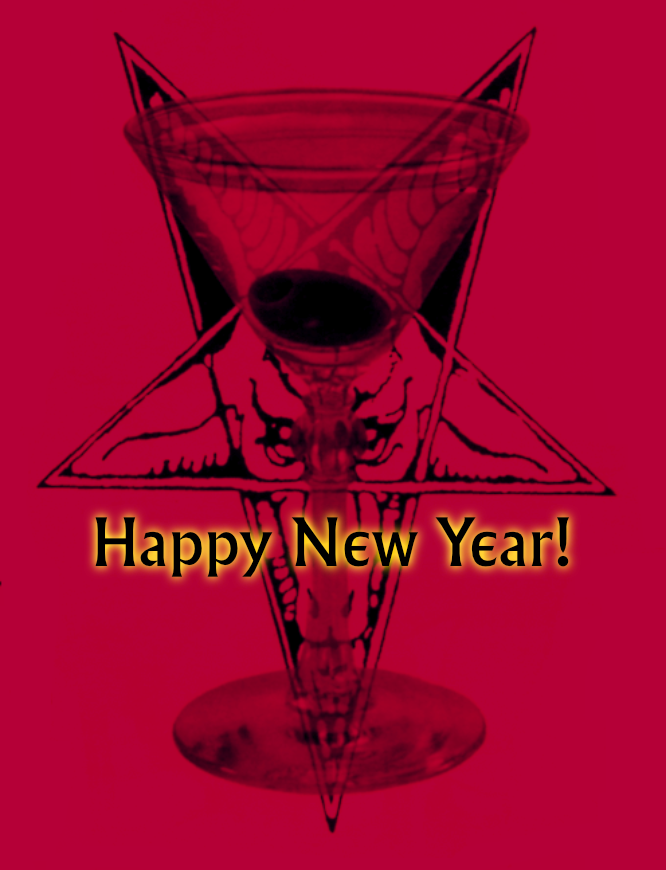Tomorrow begins year LIX, Anno Satanas.
For the new year, we of the Church of Satan have something fine to celebrate. Director Scott Cummings, of BUFFALO JUGGALOS fame, approached us before the pandemic struck with the concept of doing an artistic portrait of the contemporary Church of Satan. Not a didactic documentary, rather it is an effort to visually present our vital members engaging in their passions and their arts, woven together with the ritual traditions established by our founder, Anton Szandor LaVey. Cummings filmed over the course of several years, criss-crossing the USA, and also shooting in Canada and Europe. At last his work is complete, and REALM OF SATAN will premiere at the Sundance Film Festival this January, with four screenings over the course of that gathering. Within this film there is humor, drama, mystery, symbolism, eroticism, fantasy, and magic—both stage and ritual. I found working with Scott a pleasure, as we share many of the same cinematic aesthetics. He and his adept crew worked diligently to craft a powerful phantasmagoria. As the film moves on to global distribution, we’ll keep you informed. It may be presented at other major film festivals before the public release.

Considering projects that emerge triumphantly after years of gestation, we must note that Johannes Brahms (1833-1897) was a bit reticent to embark on his first symphony, being overtly concerned with meeting Beethoven’s extraordinary achievements in that orchestral genre. One of his earlier efforts became his first piano concerto, but after 14 years of striving, his first symphony boldly strode into the orchestral literature, and some of its contemporary critics even praised it as “Beethoven’s Tenth.” I offer the Finale (movement IV. Adagio — Più andante — Allegro non troppo, ma con brio — Più allegro) for your contemplation, with Benjamin Zander conducting the Boston Philharmonic Orchestra, as it embodies that struggle from tension and angst, through mighty striving, to attain final deserved glory. Brahms, unlike Beethoven and many subsequent composers, did not see it as being appropriate to include human singing in his symphonies, so he crafted a finale which showed how one might approach writing a large symphonic edifice having an orchestral conclusion with a similar gravity to the choral circus which Beethoven used to conclude his Ninth. As a side thought, Bruckner, contemporary of Brahms, also followed the same thinking and was deeply inspired by Beethoven—particularly his Ninth. The main theme to Brahms’ Symphony No. 1 finale was clearly a nod to Ludwig’s “Ode to Joy,” and Brahms himself said, “any ass can see that.” The entire work is one of the cornerstones of orchestral music and enjoying the full piece certainly will be compensation for the roughly 45 minutes of your life it takes to immerse yourself. Brahms himself was somewhat of an “unbeliever,” so his music is resonant with his emotional reflections on being human, wrought with his penetrating intellect towards attaining structural brilliance.
From our Black House—in The Witchcraft District here in the Haunted Hudson Valley—to your chosen lairs, High Priestess Nadramia and I offer our blessings to all of you energizing individuals, whose pursuit of vital existence will never be stifled. An uncommon cadre, you eschew the docility of so many who submit to lassitude. We’ve had the fortunate chance to come together with a fine film maker to capture and preserve some of your essences for the contemplation of those who will follow us over the centuries to come. Our thanks for your enthusiastic participation!
As is our tradition, we raise our glasses to our kind—Satanists, fellow secularists, freethinkers, and all advocates of the best qualities of our species—marking the dawning of a New Year of vigor, productivity, and prosperity:
“Here’s to champagne for our real friends, and real pain for our sham friends!”
Joy to the flesh—forever!
Shemhamforash! Hail Satan!
—Magus Peter H. Gilmore

